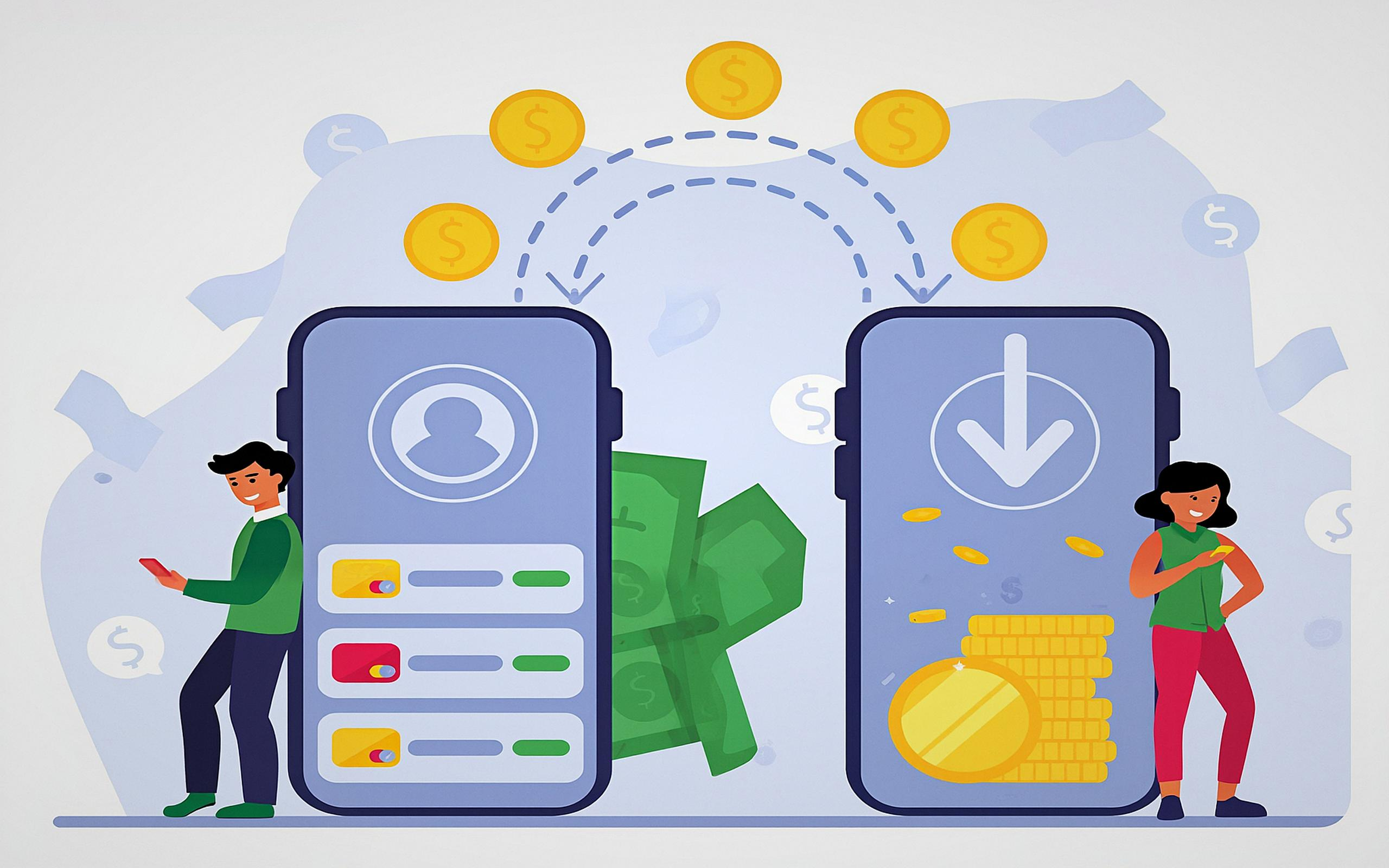
In today’s world where everything is fast paced, clients expect to do much more in a bank than just deposits, withdrawals, and balance inquiries. The banks have changed from a transactional service to a more engaging, personalized and data driven service because of the rise of financial technology, also known as "fintech." Fintech innovations have transformed banking app engagement in a way where clients do not only passively use the app, but actively participate in financial management, growth, and understanding.
In this article, we’ll explore how fintech innovations are transforming banking apps, why user engagement matters, and the key elements driving this shift.
Why Banking App Engagement Matters
If customers log into their banking apps only to check balances or perform basic tasks, their interaction remains at the surface—what’s often called shallow engagement. True engagement reflects the depth and stickiness of the relationship users build with financial services, including how readily they adopt new features and how strongly they feel brand loyalty. Deeper engagement can be described as:
- Deepened Satisfaction: Users appreciate digital experiences that come with little friction, are easily accessible, and are full of features.
- Increased Retention: An engaging application augments trust and loyalty, thereby minimizing churn.
- Growth in Revenue: There is an opportunity to cross-sell loans, credit cards, and investment services.
- Improved Digital Self-Service: There is less demand placed on the branches and contact centers.
- Wider Access to Technology: Fintech is a potent disrupter. It provides the technology, data analytics, and design that keeps customers returning to banking apps.
Key Fintech Innovations Driving Engagement
The Use of Artificial Intelligence in Personalization
The use of artificial intelligence has advanced personalization to a higher level. Users used to receive standard financial updates, but they now receive personalized insights on their spending, savings, and possible investment activity.
For example, AI can suggest positive adjustments to a user’s monthly spending habits. Similarly, predictive analytics can recommend tailored investment or loan products. This level of personalization not only creates value but also keeps users actively engaged with the application.
Instant Digital Payment Services
Users can now scan QR codes, use contactless payments, and engage in peer-to-peer (P2P) transfers, something that has fundamentally changed the use of banking apps. Rather than going to a physical bank, or even logging into a web portal, users can settle bills, share costs, or transfer money in no more than three clicks.
The best fintech apps are also collaborating with platforms such as Apple Pay, Google Pay, and PayPal to increase the range of payment options. Such partnerships enhance the utility of the banking application to the users' everyday life.
Rewards and Gamification
The most captivating aspect of banking applications today is gamification. Financial activities, once considered mundane, are now seamlessly integrated into simple and fun games. Gamification features include:
- Achievements: Badges and points awarded for routinely saving money.
- Bonus Rewards: Perks like cashback for engaging with specific features.
- Monthly Challenges: Goals such as “Save $100 this month” with rewards upon completion.
Gamification ensures that budgeting is not just routine, but is something that users actively engage in and enjoy.
Improved Security Measures
Digital transformation has also brought new structural changes to security. Modern fintech apps strengthen customer trust with biometric verification, AI-powered fraud detection, and instant transaction notifications.
These features give users confidence and reduce hesitation when performing transactions. Additional measures such as biometric logins and fraud alert systems further enhance the overall experience while boosting security.
United Financial Wellness Tools
Banks in the modern age have increasingly become more than just service providers. A host of banking apps have features to help users budget, track investments, and monitor credit scores. Through the provision of financial literacy and empowerment, banks have managed to develop deeper relationships with customers than just basic banking.
For instance, some apps allow users to automatically invest spare change from purchases, encouraging a stronger culture of saving and investing with little effort.
This focus on financial future-proofing has been further accelerated by recent tax law changes, including the One Big Beautiful Bill Act. With the introduction of "Trump Accounts"—federally funded, tax-advantaged savings vehicles for children born between 2025 and 2029—banking apps are rapidly integrating dashboards that allow parents to view, manage, and contribute to these accounts alongside their standard savings. By giving users a centralized view of their child’s government-seeded nest egg, fintechs are effectively locking in long-term engagement from growing families.
Open Banking and Third-Party Integrations
With the rise of open banking, customers can now link multiple accounts and services within a single app. This means they can view and manage checking accounts, savings, loans, and investments all in one place.
The convenience of this integration increases the time users spend on banking apps and further establishes them as central platforms for managing all aspects of personal finance.
Customer Engagement Tips for UX and Design
Fintech involves more than just sophisticated technology; it also involves how easy it is to use. Customers will use the app and explore new features more often if the interface is uncluttered and easy to use. The most responsive fintech applications focus on:
- Easy Navigation: Clear menus and shortcut buttons guide users effortlessly.
- Universal Access: The system is designed so all users, including those with disabilities, can use it effectively.
- Regular Improvements: Ongoing updates based on customer feedback ensure the app remains relevant and user-friendly.
A responsive bank banking application will employ the best technology in a sleek design to ensure maximum user engagement and satisfaction.
Examples of Fintech Innovations in Action
- Revolut: Renowned for its elegant, accessible design and international payment capabilities, Revolut retains customers by offering spending reports, crypto trading, and targeted offers.
- Chime: An American neobank that captures customers with services such as early direct deposit, free overdraft protection, and automatic savings plans.
- Monzo: Widely appreciated in Britain, Monzo gamifies financial management with lively graphics and instant alerts.
All the case studies above illustrate the value of increased engagement that comes with rich, fintech-enabled functionality.
Why Traditional Banks Must Adapt
Fintech startups are revolutionized because of their innovations. However, legacy banks cannot afford to lag behind. Customers expect the same level of digital transformation with their legacy banks as they do with the fintech disruptors.
Fintech collaborations or the adoption of fintech innovations allows banks to stay competitive and increase user engagement as well. The difference oftentimes is how fast and effectively they implement the technologies.
Future Trends: What’s Next in Banking App Engagement?
In the coming years, the upcoming generation of fintech engagement in banking applications will, without a doubt, be influenced by notable developments in:
- Voice Banking: Seamless banking with AI virtual assistants like Alexa or Google Assistant
- Augmented Reality (AR): Engaging visualization of borrowing, spending trends, and pattern analysis
- Hyper-Personalization: AI-driven behavioral and financial planning agility
- Sustainability Features: Self-evaluation and self-monitoring of carbon footprint-driven spending behavior
This will continue to deepen the engagement progress in the area of digital banking.
Conclusion
Fintech has transformed banking apps from simple transactional tools into comprehensive financial platforms powered by AI-driven customization, gamification, open banking, and seamless digital payments. As a result, user engagement has grown dramatically, fueled by interactivity and the convenience of online payment features.
For banks and financial institutions, embracing engagement is no longer optional—it’s the new norm. Innovations paired with strong user experience design will drive loyalty and sustainable growth in an increasingly digital financial landscape.
Looking ahead, leading fintech apps will continue to set the standard for modern banking as consumers demand greater personalization, stronger privacy, and enhanced security.




Comments (0)
No comment